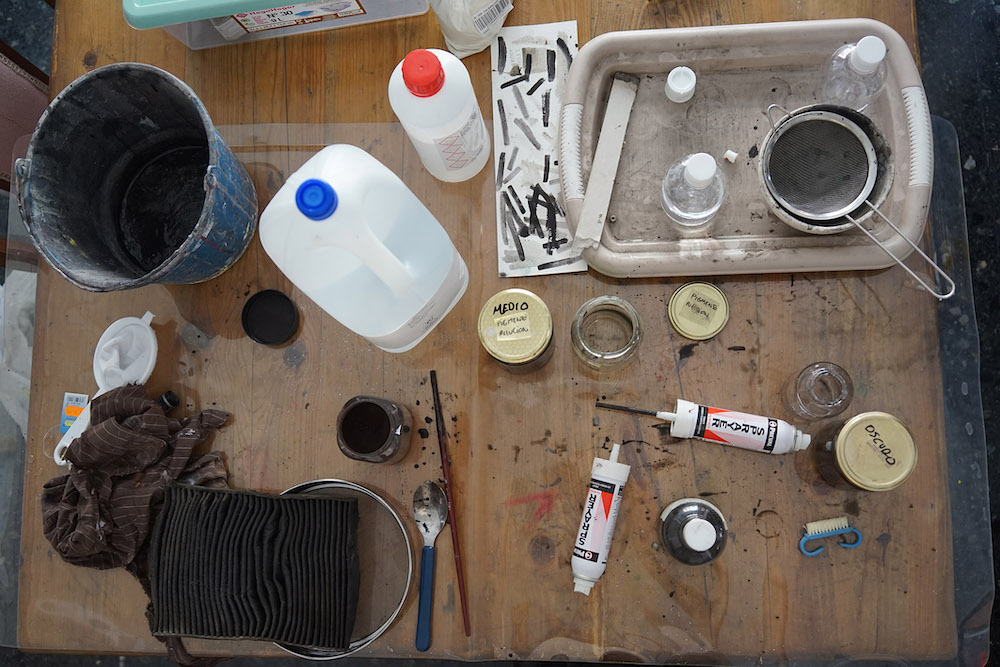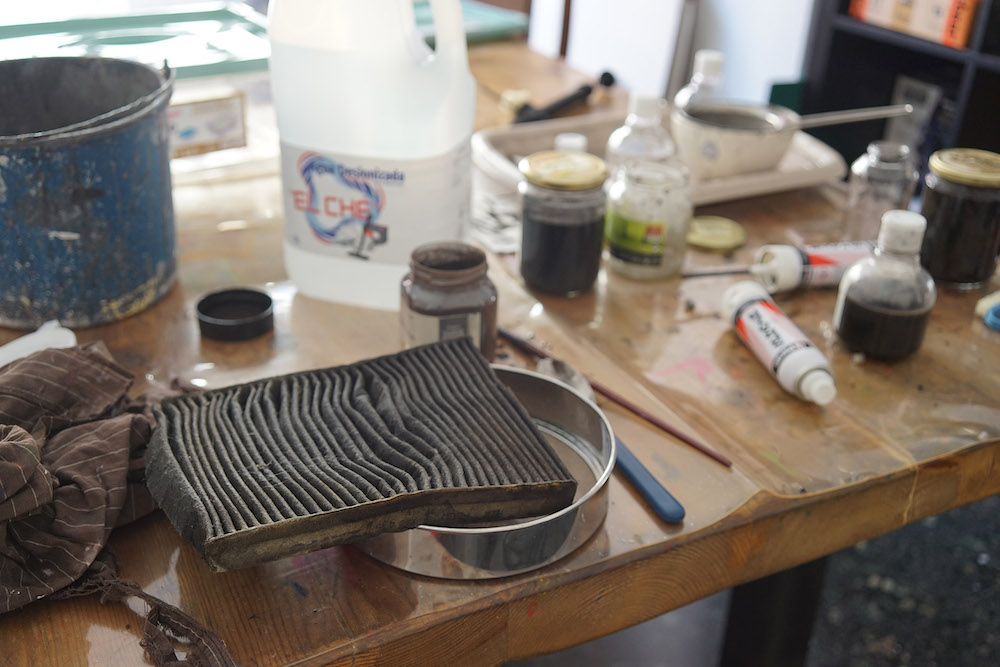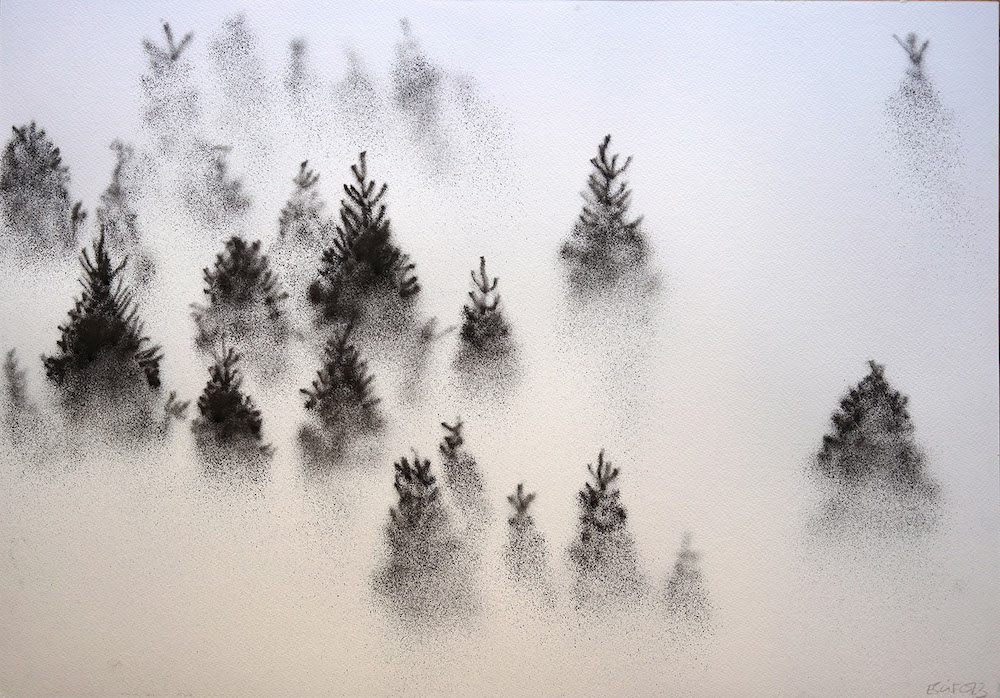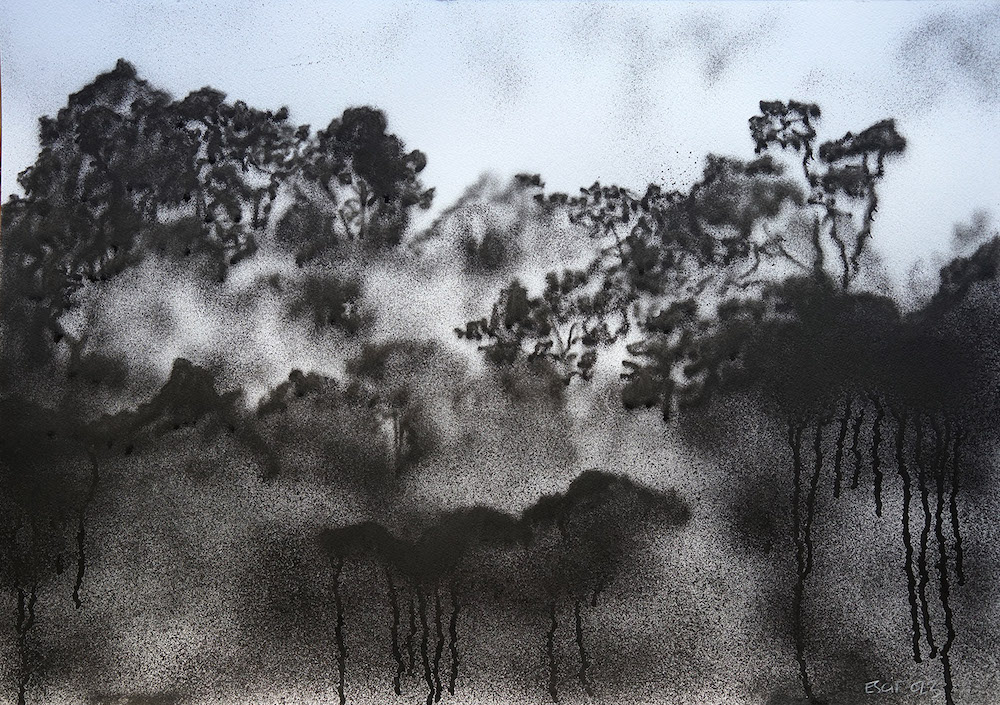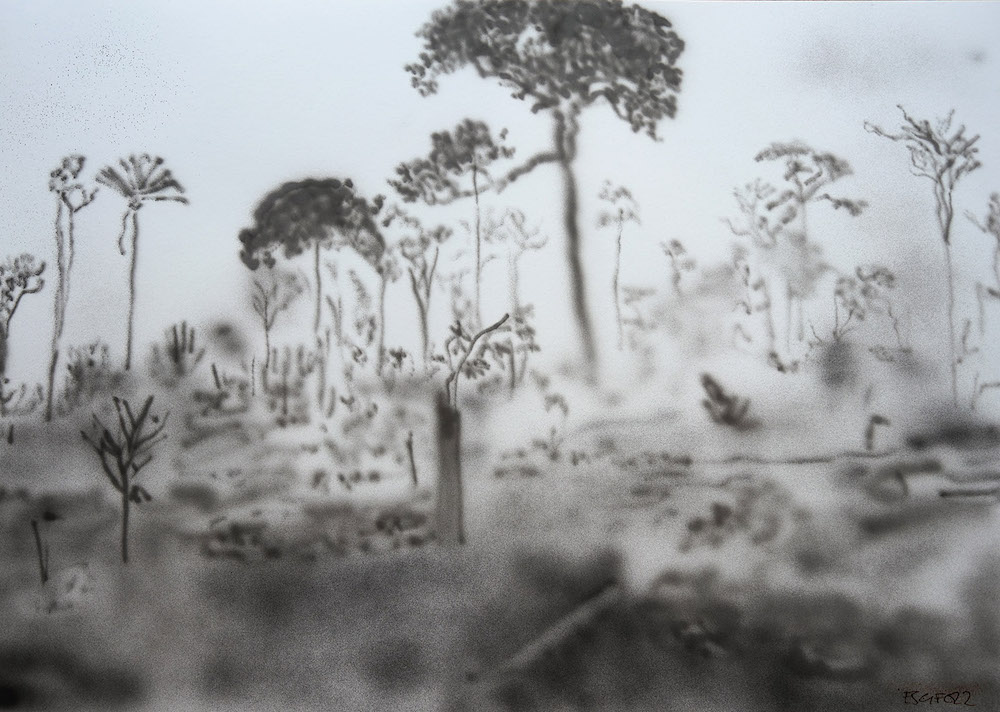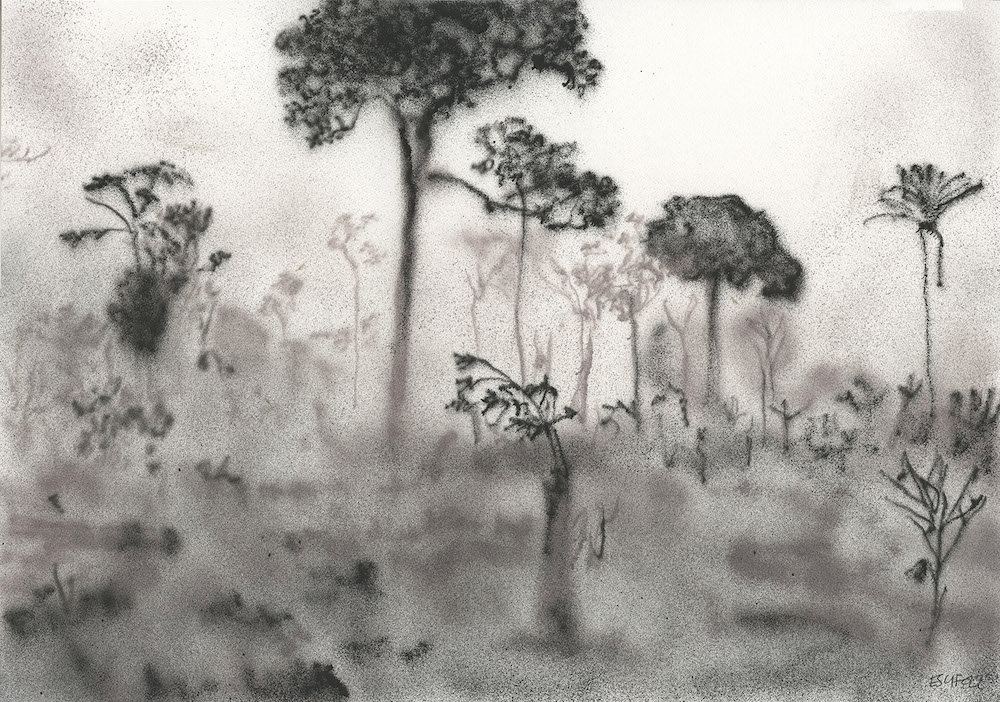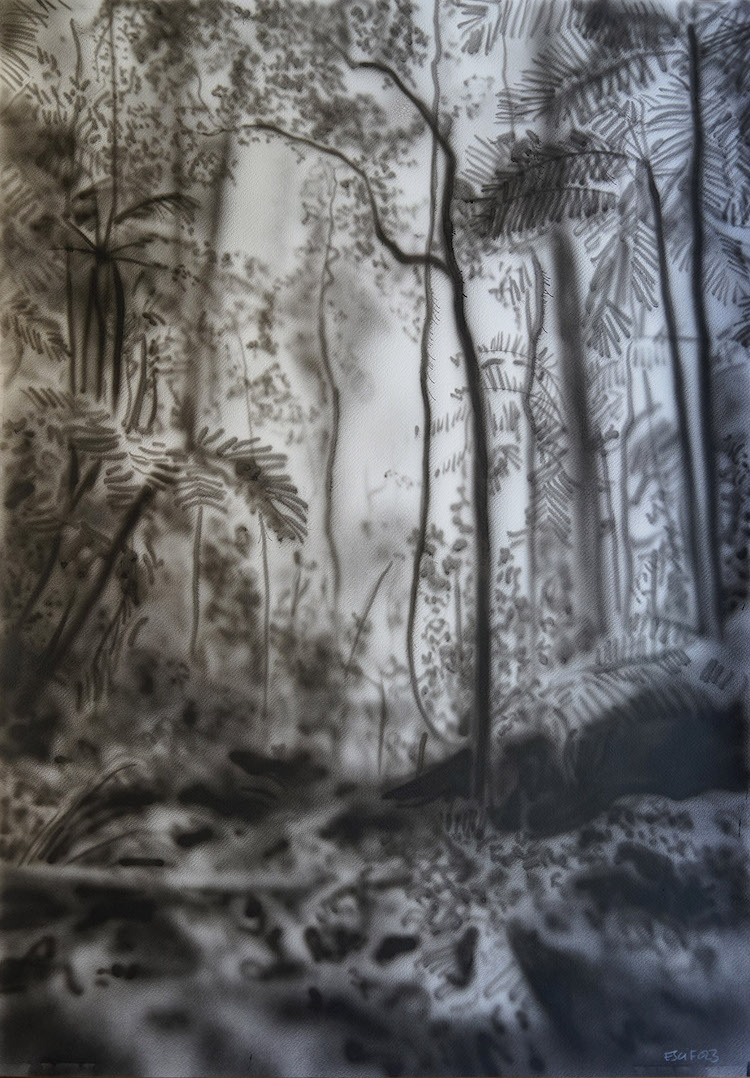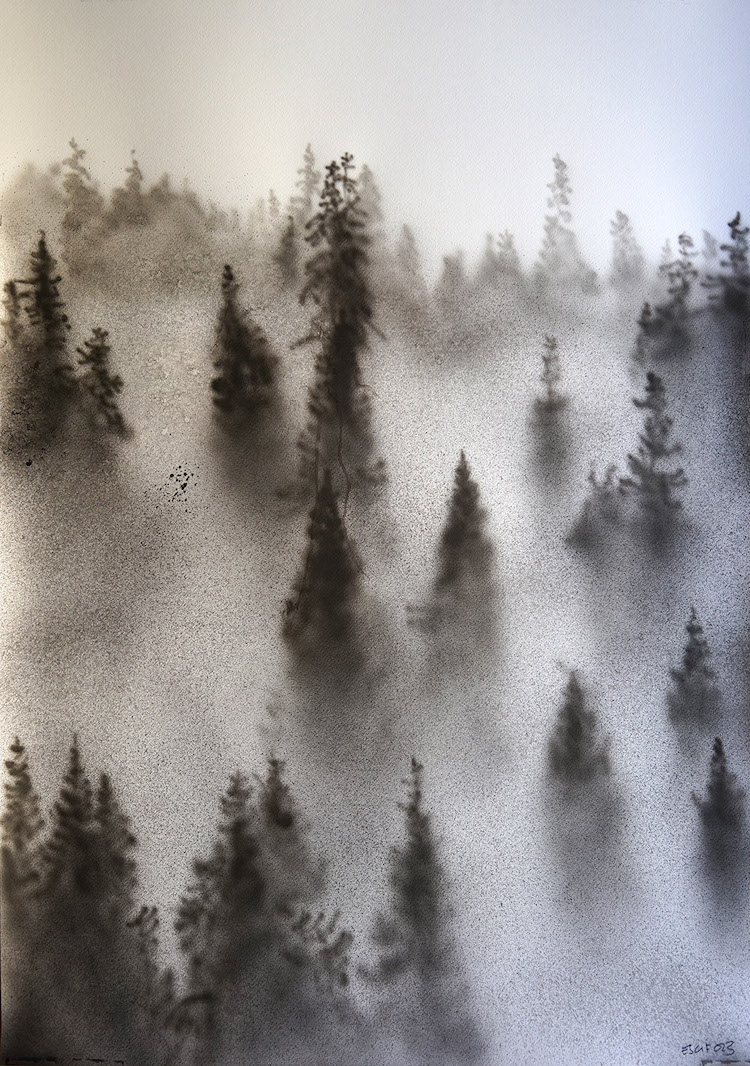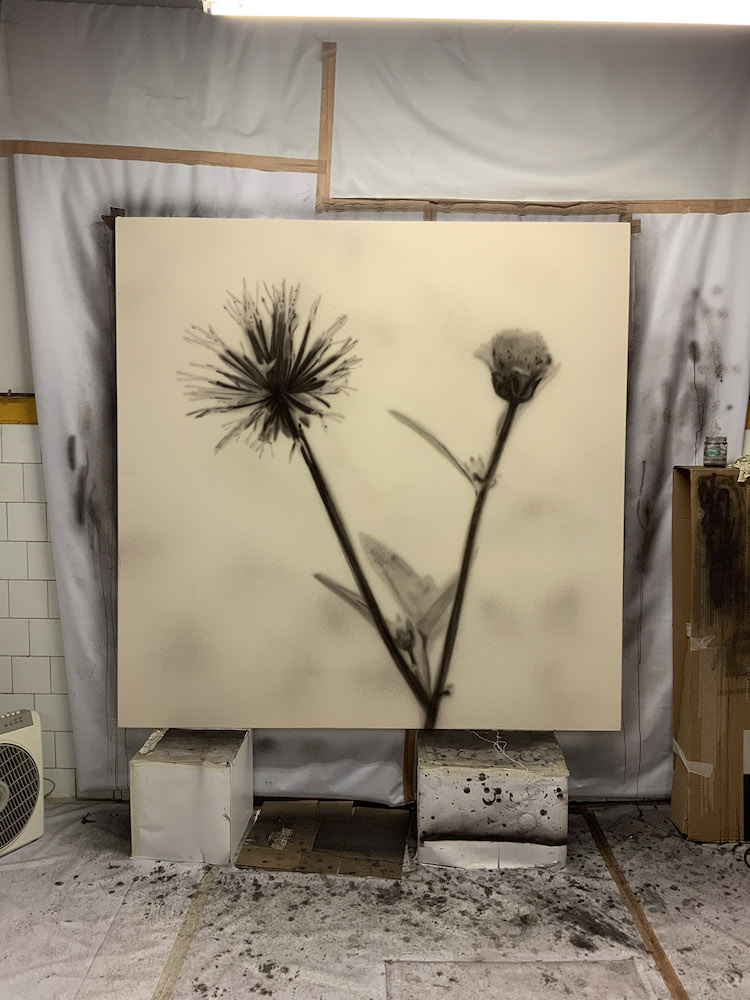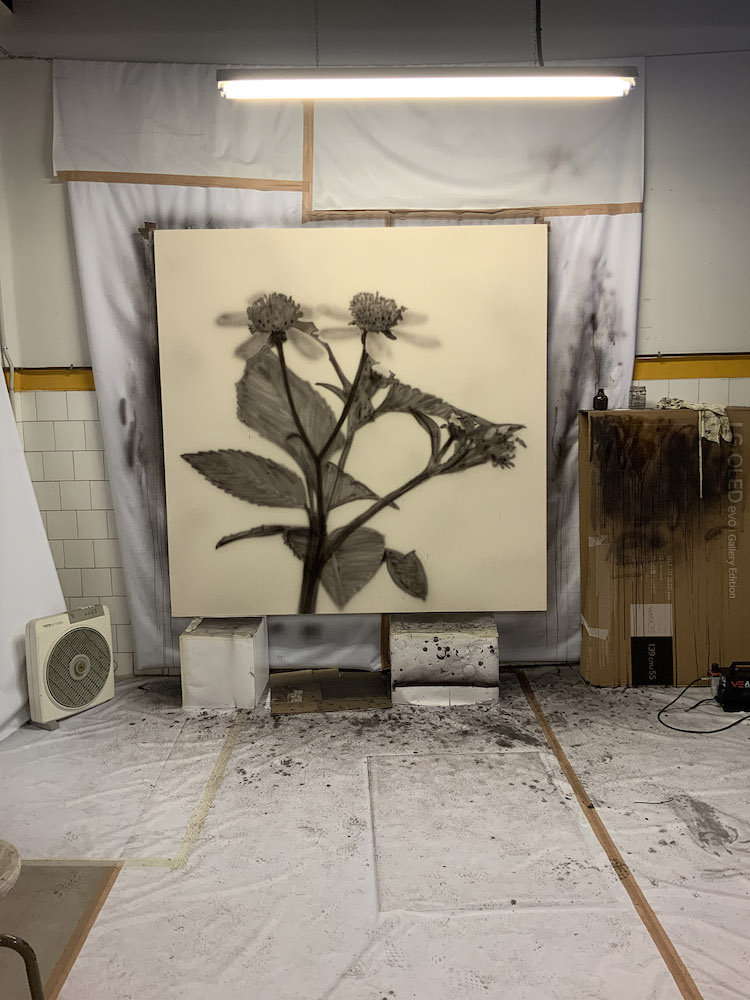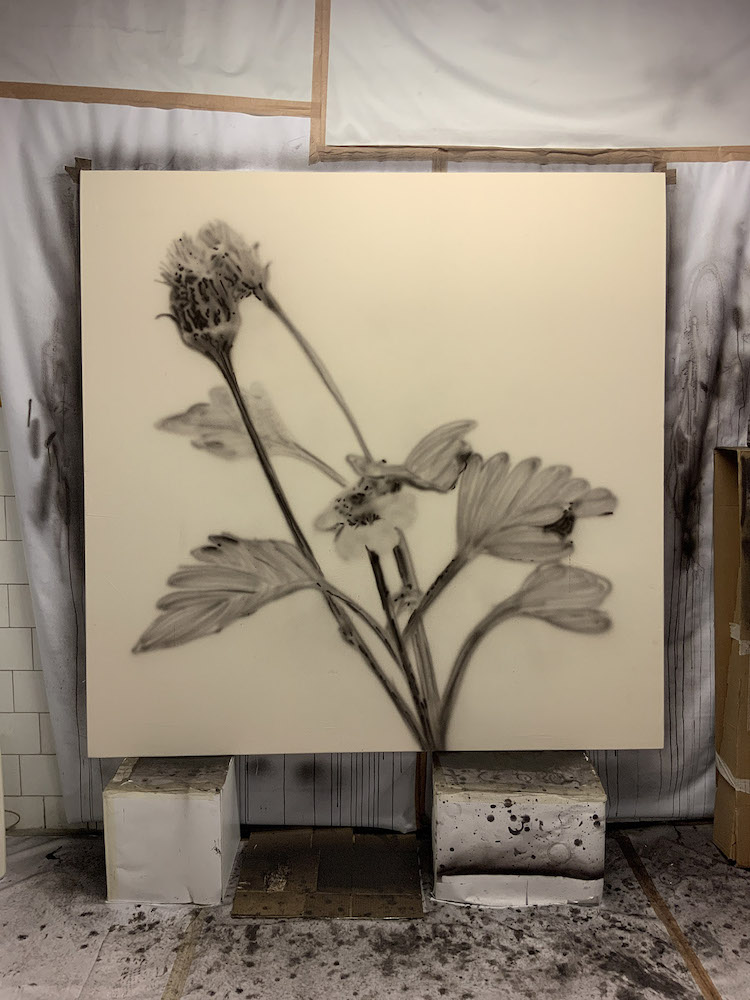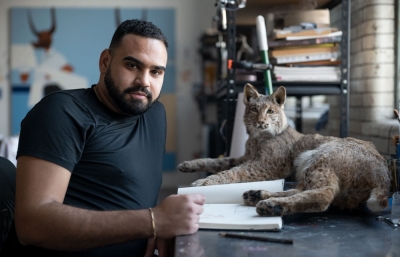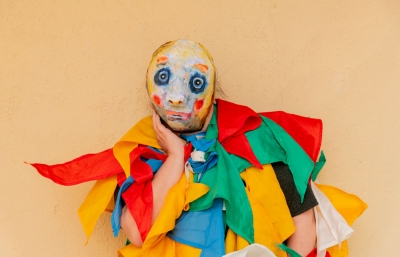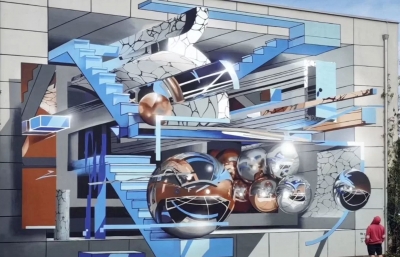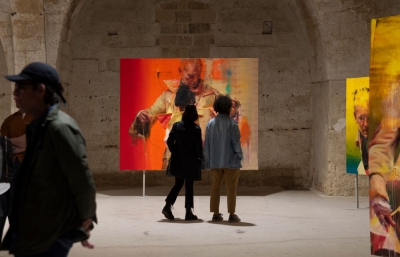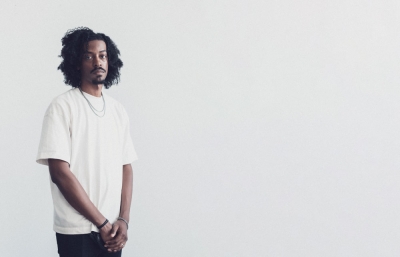“My art helps make sense of things.” Years ago, the famous environmentalist and sculpture artist Andy Goldsworthy said such a pure and simple thing that seemed to sum up the creative process. It almost seemed mundane, and yet, of course, it was far from it. “Sense” is often a loaded word, and perhaps so is “things.” And it made us think, in this day and age, after a summer of excruciating and global shifting heat, for an artist to confront climate change, become an active environmentalist, how does one make sense of things?
At Nuart Aberdeen, Spanish street and conceptual artist, Escif, continued with a process he has used in his studio and applied to a large mural painted near the Scottish city’s center. He actually painted with air—air pollution, that is—transforming it into a usable medium for art-making purposes. “The pollution ink I use in my paintings is a handmade ink that I made by extracting pollution from used car filters and mixing it with glycerin and alcohol,” Escif explained. “It's a slow process. To paint the mural I did at Nuart, I’d need around eight liters of ink, so it was not possible to produce it by myself. That's why we contacted Air Ink, based in India, which already does pollution ink and was able to send us such an amount.” And in this sincere and purest of methods, it's art that helps make sense of things. —Evan Pricco
Former cover artist and Valencia-based Escif took part in the 2023 Nuart Aberdeen festival, as well as presented a new studio work at BEYOND THE STREETS Shanghai using his own ink created from pollution. This article appears in the Juxtapoz Fall 2023 Quarterly


